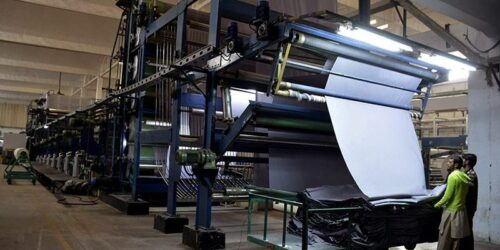With supply shortages and unsustainable average cost of gas, the government is going to withdraw subsidised gas rates of $6.5 per unit for the industrial sector as first part of a three-phased tariff rationalisation plan.
A senior government official told Dawn that Ministry of Energy (Petroleum Division) had already moved a summary to the federal cabinet for ending subsidised gas supply to the industrial sector, including captive power plants, immediately. He said a meeting of the cabinet scheduled for Tuesday (tomorrow) is expected to take up the summary for a decision given urgency of the matter.
“We cannot ensure cheap gas to the industry when there is extreme shortage and imported gas is five times expensive,” the official said. “We have been persuading them [industry] to shift to electricity which the government is ready to provide at lower rates, but there are no more options. Those unable to switch over would have to pay full cost of supply.”
The official said the average prescribed price of local gas stood at about Rs645 per unit (million British thermal units) while the delivered cost of latest LNG cargoes had gone beyond Rs5,000 per unit. The average LNG (liquefied natural gas) sale price last month stood at about Rs2,730 per unit.
Domestic gas supply to the export industry and its captive power plants currently stands at Rs820-852 per unit, while general industry is getting gas at Rs1,055, ice factories at Rs1,050 and CNG sector at Rs1,370 per unit.
The new rates will be finalised based on the cabinet’s decision.
The government has, however, provided gas at a flat rate of $6.5 per unit to the export industry along with electricity tariff of 9.5 cents per unit, besides an incentive package of Rs12.96 per unit on incremental consumption. Gas shortage in the network is now exceeding 400-500 million cubic feet per day.
Informed sources said this was part of a three-phased tariff rationalisation under which the rates for residential consumers would be increased after sometime, may be in the first or second quarter of next calendar year, depending on the socioeconomic-political situation.
They said the first two phases would then become part of the third and final phase in which the government wanted to put in place an elaborate weighted average cost of gas system involving both local and imported gases because this also involved larger consultations with the provinces.
The sources explained that first two phases would reduce the financial burden on the government and circular debt build-up in the entire gas production and supply network that now runs into trillions of rupees, seriously affecting the liquidity conditions of mostly the public sector majors like Oil and Gas Development Company Limited (OGDCL), Pakistan Petroleum Limited, Sui Northern Gas Pipelines Limited and Sui Southern Gas Company Limited, besides other gas and oil suppliers and producers.
In July this year, Petroleum Secretary Dr Arshad Mahmood had testified before a Senate committee that receivables of petroleum companies had gone beyond Rs1.178 trillion. These include Rs400bn of OGDCL held up funds with various entities, Rs357 billion of the Pakistan State Oil, Rs57bn of refineries, Rs78bn of taxes and Rs132bn of Power Holding Private Limited.
The overall tariff rationalisation mechanism will also address these payables and receivables through book adjustment and others means through cash payment or other instruments.
The federal cabinet had earlier this fiscal year also decided to stop gas supply to the industrial sector for its captive power plants and instead facilitated fresh electricity connections and improved power supplies.





